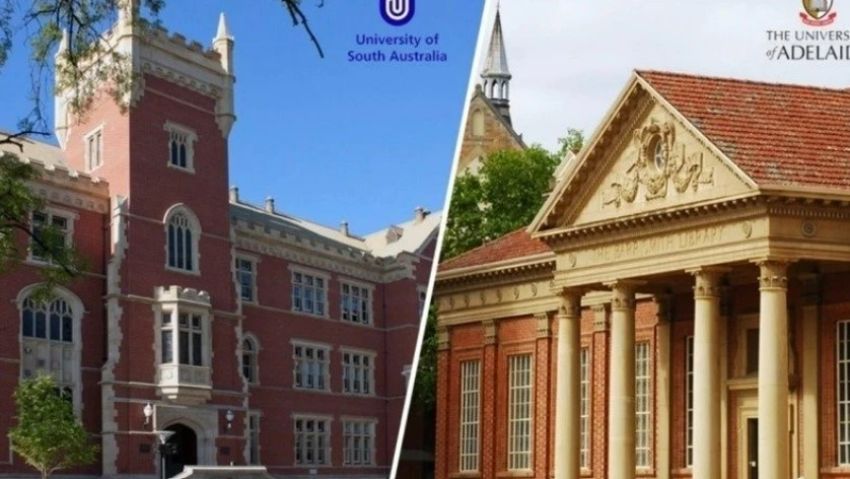
Never trust university management’s musings of glory and honey-laced promises of healthy workplaces, staff and students. Being several steps removed from the trench, they are the last to be asked about the fields of teaching and research.
But that never stops servitors of the bottom line from dictating and ruining things for those keen on the pedagogical craft and acquiring knowledge.
When such musings are paired with those of politicians, an unhealthy compact emerges. The South Australian (SA) Labor government and two major universities have decided on a merger, despite such talks between SA’s universities already having failed twice — in 2012 and 2018.
When Labor Premier Peter Malinauskas was in opposition, he proposed a University Merger Commission as part of his election platform. The policy said little about the value of teaching, focusing instead on university rankings.
Such a merger was needed, he said, to ensure that a SA university would cling to a top 100 placement in the rankings “to ensure the highest quality research is funded in this state to drive economic growth”.
Whatever the merits of university rankings, such an assessment has been incorrect from the outset. In 2023, the University of Adelaide found itself at 88 in the Times Higher Education world university rankings.
To all this could also be added an important caveat. “Should the Independent Commission determine that a university merger is in the interests of the South Australian economy and the welfare of the people of the State, then a merger will be the first term priority for a Labor Government”.
On winning the election last year, Malinauskas immediately threw money at the merger, allocating $1 million and three full-time staff in the budget to advise on the project’s feasibility. The promise of a University Merger Commission was abandoned: the Premier had already determined what was best.
The government announced on December 7, the University of Adelaide and UniSA had signed a “statement of cooperation”. Both universities revealed that, in the event that a deal could be reached, the new Adelaide University would start work in January 2026.
At the time, declarations were made by the vice-chancellors that “net job losses” would not arise. It took a mere few months to abandon the promise of job security.
In its place is a watered-down, flimsy guarantee that no forced redundancies or retrenchments would be made until 18 months into the life of the new body.
Then came the students who, for the managerial classes, only ever exist as spreadsheet returns and subsidised allocations.
As South Australian Greens MP Robert Simms observed at the time: “The experience of mergers from interstate and overseas demonstrates that they inevitably result in job losses and a reduction in the quality of the student experience”.
The Malinauskas government was also doing its bit of crystal ball gazing, stating that there was “a demand for skilled labour in South Australia, unlike any other time in our history, and that demand is likely to grow as our economy becomes necessarily more complex”.
Such words are hard to divorce from the military-defence complex that this new institution is bound to be feeding, given Australia’s push to become a nuclear-submarine power.
The prediction-prone vice-chancellors believe that research earnings amounting to $100 million will be coming into the kitty by 2034. University of Adelaide vice-chancellor Peter Hoj is confident that $50 million in annual research funds will be released.
The governing councils of both universities voted to approve the amalgamation on July 1.
Their compliance had the open-wallet endorsement of Malinauskas, who announced the next day that $115 million would be paid in exchange for taking over surplus land, with $30 million granted to attract international students.
A $300 million perpetual investment fund has been set up to make managers salivate.
Concrete details remain patchy. The bill on the merger, which will include IT considerations, course syllabi changes and staff redundancies, is the stuff of speculation and secrecy: $450 million is one calculation doing the rounds.
Nor has there been a genuine assessment about the benefits of such a behemoth. A petition against the amalgamation, which has so far garnered 1386 signatures, outlines their common defects, from the “loss of institutional identity” inherent to the specific institutions, to decreased competition and a loss of local control.
The National Tertiary Education Union (NTEU) has offered some words of concern. SA division secretary Andrew Miller fears that the amalgamation “could be catastrophic” and said an open and independent inquiry is a necessary precondition.
But Malinauskas cares little for such procedural or intellectual decencies.
The power dynamics behind the merger should also be noted. The negotiators involved will be handsomely rewarded. David Lloyd, the vice-chancellor of UniSA, is considered the favourite for assuming the reins of the new combine, with Hoj set to get the chancellor’s spot.
Any such merger will require the approval of SA’s Legislative Council, which Labor does not control. The Greens will oppose the merger.
Those who stand to lose the most in this institutional swindle are the staff and students who are being treated as the perennial digits in a dying system.
[Binoy Kampmark currently lectures at RMIT University.]